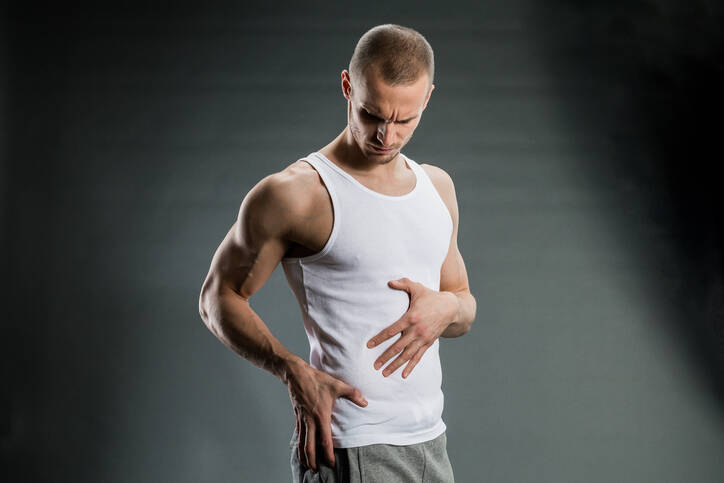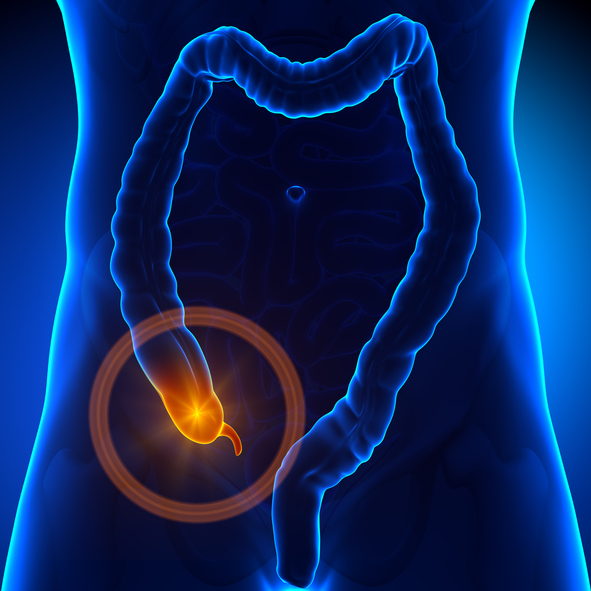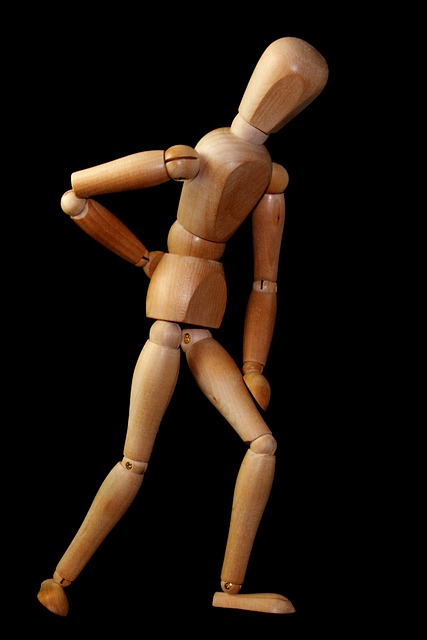Flank Pain: Causes and Pain Management

What does flank pain indicate? Sometimes it is a serious problem, sometimes it is not. Read about possible causes in the article.
Flank pain has a primary character when the pain is caused, for example, by excessive physical activity and exertion.
It may also have a secondary character, where the pain is caused by an illness or deterioration of health.
The abdominal and flank area involves multiple systems.Therefore, it is difficult to determine the exact cause by a single symptom.It can radiate into the lower abdomen, back, abdomen, lower abdomen.Conversely, it often shoots from these areas to the side.A variety of discomforts may be associated, depending on the organ or structure affected,for example, difficulty breathing, upset stomach, vomiting, bleeding.
Flank pain may not immediately indicate that this is where the pain originates from.
Many times it is pain in other organs or tissues. The pain radiates or shoots just to the side either from the abdominal cavity or from the spine.
However, if it is pain that has not been previously conditioned by anything and there are no external causes or stimuli for it, it can signal diseases and problems of the musculoskeletal, urinary and digestive systems.
Stabbing pain in the flank
This pain is very common, for example, with greater physical exertion, running, especially in people who are not used to increased physical activity. It is for this reason that a twinge in the side is common in them. This passes after a few minutes, usually at times of rest and calm.
With activity such as running, blood flow to the liver and spleen is increased. This provokes tension and, consequently, pain. At rest, the congestion subsides and so does the pain.
This statement is one of the theories of sharp flank pain.

Digestive system
If you experience stabbing, cramping or other pain at rest, there might be a more serious disease behind it. Usually, these are diseases of the digestive tract.
The gallbladder is used to collect bile, which is secreted during food intake. Pain from the gallbladder is mostly manifested on the right side below the ribs and in the right flank. Difficulty after eating, especially with a wrong diet, may indicate gallstones.
Stones can be in the bile ducts and also directly in the gallbladder. These parts can be affected by inflammation. Similarly, ulcer disease can also manifest itself. Pain to the right side mostly radiates in duodenal ulcer.
If it is a stomach ulcer, the pain may radiate under the left rib arch up to the left flank. Inflammation of the pancreas may also demonstrate to the left side. The latter can be acute or chronic.

Pain in the left or right side may be a diagnostic suspicion for the disease. Its character may be dull, sharp, stabbing, but also cramping and colicky. It is also associated with a sensation of heaviness, nausea or vomiting.
The cause can be, for example, flatulence and bloating. This pain is felt over the whole surface of the abdomen, and also in the flank, where the large intestine is located. In the same way, inflammatory diseases of the large or small intestine are also manifested by pain.
In the right lower abdomen there is a typical pain due to an inflammation of the appendix, i.e. appendicitis. However, it first begins to hurt especially in the area around the navel. Later, the pain gradually moves to the right side, i.e. the lower abdomen.
Excretory system
Often, problems and deterioration within the urinary and excretory tract are also manifested by pain in the side. For example, kidney stones or urinary stones, otherwise known as urolithiasis, are very common.
These stones form in the kidneys, urinary tract and bladder from substances that have not dissolved in the urine, especially from various minerals. When these stones get stuck or when they travel in the urinary tract, they can also cause flank pain.
Inflammation of the kidney, urinary tract and bladder can have one of the symptoms of pain in the side. The latter may shoot to the respective side depending on which side it is located. In addition to pain, there may be an elevated body temperature, a feeling to retch to vomiting.
For example, with a kidney stone, but also with inflammation on the left side, pain can radiate to the left lower abdomen and left sacral region. When the right side is affected, the pain radiates to the right side of the back, the right lower abdomen, sometimes even to the groin.
Suspected tumour
Both pain in the lumbar region and flank pain are also manifested by tumours, for example in the kidney. In addition, weight loss and blood in the urine may also be noticed and suspected.
At the beginning, blood is rather microscopic, that is, not visible to the naked eye. At a later time, it may become macroscopic, i.e. freely visible. Blood in the urine is technically referred to as haematuria.

The locomotor apparatus (musculoskeletal system)
In addition to pain in the side, which is a symptom of digestive and digestive problems, musculoskeletal pain may also be present. Specifically, spinal pain that originates from the back of the body and gradually radiates to the side. In most cases, these are long-term pains that come on slowly, are chronic and migrate along the side of the body.
Similar manifestations can be seen in an inflammation of the muscle, a chest injury, a rib fracture, injured ribs, without fracture, which are also painful. The pain is aggravated on movement and also on inspiration (inhaling).
Gynaecological difficulties
In women, pain in the side may be manifested by inflammation of the ovaries and their underlying structure, fallopian tubes, inflammation of the uterus, ectopic pregnancy, cysts, ovulatory or menstrual pain. From the region of the small pelvis it radiates to the flanks.
During pregnancy
Also in this period, the occurrence of the difficulties described above is possible. Pregnant women cannot avoid gastritis, gallbladder or kidney colic. There is a considerable load on the spine and the general musculoskeletal system.
The body and the abdominal cavity are adapting to pregnancy. The uterus enlarges, for the needs of the fetus, putting pressure on the surrounding tissue. The movements of the fetus also sometimes cause short-term pain in the side. It is necessary to think about other issues as well, so it is preferable to consult the pain with a gynecologist.
Other causes
With respect to the area of involvement of the organ or structure in question. As far as pain is concerned, it is possible to think of an abdominal episode with several possible causes. An approximate cause may be assumed according to the actual discomfort and associated symptoms.
Some common causes of pain:
- inflammation of the pleura
- pneumonia
- lung cancer
- pain in the intercostal structures
- enlargement of the spleen
- inflammation of the stomach
- ulcerative colitis
- Crohn's disease
- irritable bowel syndrome
- constipation
- diarrhea
- shingles
- sexually transmitted diseases and infectious diseases
- bleeding into internal cavities, both after trauma and as a result of disease (ulcer, tumor, liver, stomach, intestine)
Early diagnosis can help to treat the tumour effectively, as can early diagnosis of other diseases. So, flank pain is not to be underestimated. We recommend a medical check-up.
Flank pain causes symptoms diagnosis treatment and prevention
Diseases with symptom "Flank Pain"
- Arthrosis
- Crohn's disease - Morbus Crohn
- Cyst on the ovary
- Ectopic pregnancy
- Enteropathic Arthritis
- Facet joint syndrome
- Flatulence
- Inflammation of the Ovaries and Inflammation of the Uterine Appendages
- Juvenile idiopathic arthritis
- Kidney stones
- Kidney inflammation
- Kyphosis hyperkyphosis
- Osteochondrosis
- Ovarian cancer
- Psoriatic arthritis
- Reactive Arthritis
- Sciatic Nerve Inflammation - sciatica
- SI joint block
- Spinal Disc Herniation
- Spondylarthritis
- Spondylarthrosis
- Spondylosis
- Undifferentiated spondyloarthritis
- Vertebrogenic Pain Syndrome
- Coccygeal pain
- Diabetic neuropathy
- Endometriosis
- Radiculopathy
Interesting resources
Related










